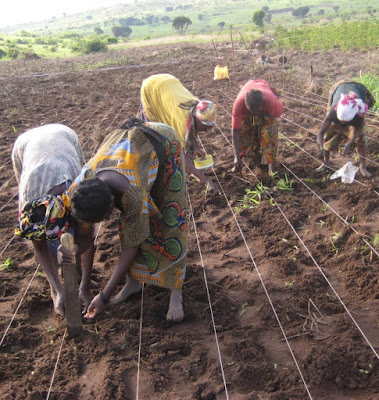Key Populations (KP) in Uganda Come of Age and Ask the Right HIV Prevention Questions as They Navigate Optimal Outcome paths
One working in the HIV Prevention
& Care Service Delivery in Uganda, will easily note that the CSOs involved
experience a milestone disparity as they sprint toward the UNAIDS 95:95:95
goal.
Imagine there are two sprinters asked
to race forward to the finish line. One has their hands tied and the other is
free. It would be preposterous to expect
a victory from the one with the hands tied. KP-Led Organizations in Uganda face
cumbersome barriers which they need to go over to be effective. The major question
raised by funders is how to maintain ARVs medication to ensure optimal viral
suppression in Persons Living With HIV. But, for KP-Led organizations this goal
is arrived at after asking vulnerability and susceptibility-related questions.
A qualitative analysis of reports from
44 KP-led organizations was done. The aim was to find the underlying subjective
characteristics linked to achieving HIV Prevention optimal outcomes.
The exercise revealed interesting
findings. The readiness to roll out effective HIV Prevention activities hinges
on facilitation for organization development. KP-led organizations served
beneficiaries with the goal of availing opportunities for access to ARV service
providers. There are navigation paths which needed to be addressed as well.
These are further divided into the proximate and distal parts with underlying
subjective causes and processes (factors).
The proximate causes were defined as
actionable attributes of availability and use e.g., presence and taking of the
medication. The proximate processes involved time and task oriented activities
e.g., time for taking prescription, actual taking of a prescription,
availability of food or water necessary for beneficial drug action.
At the distal part were structural and
environmental factors e.g., no immediate threats or barriers to one’s taking
medication, price, political conditions, social status, stigma, discrimination,
harassment, availability of health facilities to ensure refills and regular
supply of medicines before stocks run out.
Beneficiaries of KP-led organizations in Uganda, have the following characteristics: unstable housing,
have difficulties paying for transport to go to clinics for regular check-ups
or refills. The likelihood of facing stigma and discrimination in their
domicile communities and at other points of call is so high.
These conditions
combine into what are known as a Vulnerability and Susceptibility Chain (VASC).
VASC in turn opens ways for poor or no possibility to negotiate for safer sex,
a possibility for abused partners in a relationship to remain silent about
abuses, high likelihood of HIV transmission, poor ARV-adherence and subsequent
lack of viral suppression.
But, what can be done to address VASC?
There are three compelling answers.
The first was to allow KP-led
organizations to establish viable groups. These should be facilitated to go
through organization development trainings. This in turn would improve their
readiness to become effective HIV Prevention
actors. It would create a durable prevention culture enabling access to HIV Testing,
put those with positive diagnosis on ARVs and ensure those on ARVs adhere so
that they experience viral suppression over time. There are added advantages in
being part of support groups. It means that people who choose to form, join and
maintain viable groups, enjoy many advantages. The advantages range from
companionship, building self-esteem, assurance of stable housing, affinity to
caring for others and motivation to commit to ARV adherence for those with
positive diagnosis. This in turn addresses what is known as Generalized Anxiety
Disorder (GAD) known to be faced by PLHIV who are not cared for or who fail to
seek care services. This too is associated with lower rates of HIV
treatment, adherence to treatment and very poor or no viral suppression,
according to Benjamin Ryan (2019) in an article titled “A High
Proportion of People with HIV Suffer from Anxiety,”
The second was to enroll in Clinical
Trial Programmes that are available in the country. This increases
opportunities for regular monitoring and evaluation by well trained and
qualified health workers.
The third was to embrace new health
technologies that increase opportunities for avoiding breaks in taking ARVs
e.g., for vulnerable women and girls. One such example is the vaginal ring. In
an article by Roxy de Villiers (2019) titled “The
quest for the (vaginal) ring,” the “a vaginal ring inserted monthly could reduce
women’s risk of contracting HIV, it is a long-acting form of treatment
that HIV-negative women can take before being exposed to HIV to reduce their
chances of contracting the virus.”
The above three suggestions combine as
opportunities for KP-led organizations in Uganda to promote the taking ARVs as
prescribed both easier said and done.



Comments
Post a Comment